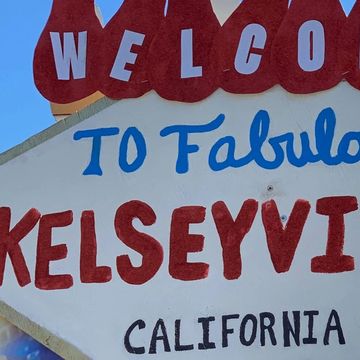There’s a certain kind of story you hear again and again when talking to writers who’ve worked with McSweeney’s, the San Francisco–based nonprofit publisher that grew out of the lit journal Timothy McSweeney’s Quarterly Concern, whose first issue landed in 1998. It goes something like this: The writer has an idea—maybe a 3,352-page manuscript or an unclassifiable little thing that falls between a short story and a novella—and every publisher they pitch takes a pass.
The writer collects enough rejection letters to wallpaper a room and begins to accept that no one will want their work; they should’ve gone to law school; their stepfather was right; working in a cubicle isn’t the worst thing; Melville had a day job.
Then Dave Eggers shows up.
In the early 2000s, William T. Vollmann had a manuscript he was calling Rising Up and Rising Down. Vollmann estimated that he’d been working on it for 23 years, and despite the fact that he’d already put out eight novels, three story collections, and a memoir of his time as a 22-year-old American kid fighting the Soviets alongside the mujahideen in Afghanistan, his publisher had balked. Maybe it was the book’s subject matter, “a moral calculus” for violence that the author says could “help politicians, soldiers, other mass murderers to kill people mindfully.” Maybe it was the book’s length: around 3,352 pages.
“I just figured I was writing for the desk drawer,” says Vollmann, who lives in Sacramento and must have a massive desk with very deep drawers. After giving a reading in 2001 at Berkeley’s storied Black Oak Books (since shuttered), Vollmann was approached by Eggers, who’d been in the audience. “He came up and asked me if I’d be willing to have him publish the book. So of course I was thrilled.”
This article appears in Issue 25 of Alta Journal.
SUBSCRIBE
At that point, McSweeney’s had published only a few titles, starting with a humor book called The Neal Pollack Anthology of American Literature, a collection of parodies by the “Greatest Living American Writer across six decades, seven continents, and ten wives.” Rising Up’s author might’ve been humbler, but the book was far more complex, requiring a year and a half of fact-checking. In 2003, McSweeney’s published an unabridged hardcover of Rising Up and Rising Down in a seven-volume box set that went on to be a finalist for a National Book Critics Circle Award. Copies now sell for upwards of $1,200 on eBay.
Another example: Sarah Manguso was a poet when Eggers asked her to write a very short story for the spine of The Better of McSweeney’s, a 2005 anthology drawn from the lit journal. McSweeney’s had run a spine story before—David Foster Wallace contributed one in 1999—and Manguso liked the idea. “It was just like writing a poem,” she recalls from her home in Los Angeles.
After that, Eggers asked her to write a story collection. “I was like, Oh, Dave, I’m just a simple poet. I couldn’t possibly do that. But I could write a poetry collection for you. And he’s like, No, you need to write a story collection,” she says. In 2007, McSweeney’s published One Hundred and Forty Five Stories in a Small Box, a lovely little volume that featured Manguso’s Hard to Admit and Harder to Escape, Deb Olin Unferth’s Minor Robberies, and Eggers’s own How the Water Feels to the Fishes.
“It’s hard to explain what a huge turning point that was in the way I thought about myself and my work,” says Manguso, who went on to write five books of prose and has a second novel on the way. “I guarantee he was thinking, OK, how, how can I help two aspiring-slash-struggling-slash-younger, less established writers?”
Unferth felt the same way. “He easily could have just published a slim collection of short-shorts on his own, and it probably would’ve sold even more copies than it ultimately did,” she says. “He did it just purely out of the goodness of his heart.”
Not convinced? Talk to Lawrence Weschler, who had been a New Yorker staff writer for nearly 20 years when he first met Eggers through Sean Wilsey, a colleague who’d started working on McSweeney’s on the side in 1999.
Weschler’s writing career had begun under the legendary New Yorker editor William Shawn, and yet he couldn’t convince his then-editor, Tina Brown, to publish a series of visual juxtapositions he was calling Convergences. (The magazine had printed a single one by him in 1992.)
Eggers embraced Convergences, making them a signature part of the quarterly for years. In 2006, McSweeney’s published Everything That Rises: A Book of Convergences, which went on to win a National Book Critics Circle Award for Criticism.
“He just gave permission,” Weschler says.
In 1998, Dave Eggers was in his late 20s, toiling as editor at large for Esquire while tinkering with a side project: a perfect-bound journal of stories killed by other magazines and bits and bobs that he’d named after a man he’d never met who claimed to be a relative of Eggers’s mother—Timothy McSweeney’s Quarterly Concern.
The journal was printed with loving care in Iceland and featured a text-intensive design (also by Eggers) that hearkened back to the turn of the century. The cover of the first issue, dubbed “Gegenshein” for a celestial optical illusion caused by the sun, featured a then-topical, now-inscrutable joke about a very expensive failed Condé Nast publication. It was all text and looked like something that might’ve been printed by hand and given to mourners at a Victorian funeral. Everything about it served as a rebuke of Eggers’s day job, which involved writing pithy copy to run alongside photos of Madeleine Stowe in a see-through body stocking. (Eggers, a shrewd critic of media, including his own, used his Stowe-adjacent copy, not much more than a caption, really, to critique the photo itself and the objectification of women by magazines in general.)
Dropped on the world as a kind of polished, keenly self-aware zine at the dawn of what would become the era of digital publishing, McSweeney’s was, in other words, a Statement, an anti-magazine created by rogue magazine professionals. Eggers had already cofounded Might, a short-lived San Francisco magazine with a cult following, but McSweeney’s was simultaneously more ambitious and stripped down. “This thing will be more about trying new, and almost certainly misguided, ideas,” he wrote in an email to would-be contributors in 1998. “It’ll be fun, and if we’re not careful, we might make publishing history!” Eggers expected it to run for four issues, eight at the most, but he was so wrong.
Very quickly, McSweeney’s—the journal and the publishing house—became a cultural touchstone for a small, self-selecting group of bookish young people. The publication was name-dropped in the movie Juno; Neal Pollack was referenced on an episode of Dawson’s Creek; Eggers appeared on Late Night with Conan O’Brien to sheepishly recount how he once gave a reading with exotic dancers performing behind him.
One thing that helped propel McSweeney’s from a tiny magazine appreciated by people in clunky glasses in Brooklyn, San Francisco, and possibly Iowa City to a pop culture reference on the lips of Katie Holmes as Joey Potter (Dawson’s 4eva!) was another side project Eggers had been working on while he should’ve been focusing on Madeleine Stowe: a memoir titled, with McSweeney’s-esque vigor, A Heartbreaking Work of Staggering Genius.
Released in 2000, the memoir used some postmodern sleights of hand to tell the story of Eggers’s parents’ near-simultaneous deaths and the author’s new life co-parenting (with his sister, Beth) his little brother, Toph, while trying to squeeze some pleasure out of being a twentysomething in 1990s San Francisco.
Told with humor, humility, and moments of, well, heartbreak, the book sold massive quantities and attracted rapturous praise from critics as well as scorn from some writers who, let’s just be honest (it’s been 23 years), were being assholes.
Those assholes (just being honest!) mounted something of a backlash made up of different people in clunky glasses in Brooklyn. In 2003, screenwriter turned first-time author James Frey gave an expletive-laden interview in which he tore into Eggers and mocked his memoir’s title by declaring, “I’m going to try to write the best book of my generation and I’m going to try to be the best writer.” (That book, a memoir called A Million Little Pieces, would be revealed to be largely fabricated, its publisher forced to offer refunds to book buyers.) In a 2005 essay for Nerve, Ada Calhoun cited McSweeney’s as one reason dating was so frustrating for some straight women, writing that “you have to have your eyebrow cocked twenty-four hours a day.”
The journal N+1 launched in 2004 with an editorial accusing McSweeney’s of being a “regressive avant-garde,” declaring, “Intellect did not interest them, but kids did. Childhood is still their leitmotif.” In the same issue was a longer piece that (shades of McSweeney’s) had been killed by the Atlantic about a Calabasas teenager and Eggers superfan. Read today, “Eggers, Teen Idol,” by author and New Yorker writer Keith Gessen, can be seen as an early study of the possessive, internet-enabled fandom now known as stan culture. Mark Greif, one of N+1’s founders, wrote in 2013 that despite the brickbats he and his colleagues had hurled at McSweeney’s, they’d relied on a breakdown of the quarterly’s printing and mailing costs, which Eggers had freely disclosed in early issues, as a guide for their own enterprise.
The criticism of McSweeney’s as childish or cloying missed the point, says Manguso. “It’s not like a stupid sweetness. I would say that there’s even an incredible maturity to it because it goes beyond youthful cynicism.” Weschler calls it a “combination of irony and humor with deep moral purpose.”
“Some people found it twee, which was the annoying word that got applied to it. But I think it was a sense of play,” says Ethan Nosowsky, who worked as editorial director for McSweeney’s from 2011 to 2013 and now serves as editorial director of Graywolf Press. “You know, Let’s have fun, let’s put on a show.”
A quarter of a century later, the show continues. In late April, I catch up with Eggers at McSweeney’s San Francisco offices. At 53, he moves with the relaxed bearing (and even more relaxed T-shirt and ball cap) of an adolescent, though his Byronic curls are turning gray. Comprising one big room and a basement that’s served as the meeting space and crash pad for at least two generations of employees who’ve more or less spent their entire 20s in the place, the premises feature nearly floor-to-ceiling bookshelves lined with some of the roughly 200 books and 200-plus journal and magazine issues Eggers and his many colleagues have willed into the world over the decades.
Eggers and Sunra Thompson, the journal and publishing house’s art director since 2016, are poring over prototypes from a printer in China for the 25th-anniversary edition of Timothy McSweeney’s Quarterly Concern, an issue contained within an Art Spiegelman–illustrated lunch box.
“We’re going to have to put an old banana in each one,” Eggers tells Thompson.
“Mm-hmm,” Thompson says. “Totally makes sense.”
McSweeney’s is still Eggers’s Statement, but it’s also grown from a shambolic pirate enterprise to become (in the parlance of our times) a multiplatform,
omnichannel experience.
Now operating on a $2.2 million annual budget, McSweeney’s continues to put out four issues a year of its eponymous journal that range from paperbacks to a cigar box to a pile of junk mail to a full-color multisection newspaper to a massive box illustrated with a sweaty, mustachioed face.
Meanwhile, the nonprofit publishing arm releases books in all genres and is currently home to two other magazines, the Believer and Illustoria (McSweeney’s has also started periodicals like food magazine Lucky Peach and a DVD magazine called Wholphin and released one-offs like experimental-fiction journal Unfamiliar and faux scientific publication Yeti Researcher). It served as the launchpad for a global organization of youth writing programs named for San Francisco’s 826 Valencia Street, the group’s flagship location, which, in a gesture to Eggers and crew’s swashbuckling spirit, doubles as a pirate-supplies store. The kids love it. (Another McSweeney’s-affiliated nonprofit, Voice of Witness, was launched in 2004 to collect oral histories from people who’ve survived human rights crises; ScholarMatch, started in 2010, helps students get into and graduate from college.) McSweeney’s Internet Tendency is a popular daily humor website.
“All of these things are just like exactly what I always wanted to happen,” Eggers says. “Even going back to like when I was 14, that was always my dream, like, What if you have this building and people get to create stuff and be like Warhol’s Factory but without the drugs and all the deviance and weirdness or whatever? But just creating stuff like that was always the goal.”
McSweeney’s retains the same 14-year-old’s enthusiasm, a half-serious, half-joking chutzpah of young people making it all up on the fly. Sharing an anecdote about a conversation he had with Eggers around the turn of the century, when McSweeney’s was set to publish his slim, impossible-to-classify novella, This Shape We’re In, the novelist Jonathan Lethem inadvertently sums up McSweeney’s driving ethos: “Maybe this is nothing. Maybe this is everything. Who knows?”
“Everything that we do, whether it’s a book or a magazine or even our humor website, we’re looking for the most perfect, most resplendent form that something can take,” explains Amanda Uhle, McSweeney’s executive director and publisher since 2018.
Uhle’s job, like Eggers’s, is to say yes. “I don’t say no a lot,” she says. “One of the reasons writers want to publish with us is that we go out on a limb and we do things that others don’t do or are afraid of or think costs too much or is too marginal in some way.”
“To be able to be driven primarily by what is best for this writer, this idea, this text, rather than driven by ‘Well, our unit price maxes out at this.’ You know, that [approach] just doesn’t make for the most engaging, the most courageous kind of work,” she adds.
It can be argued that publishing anything on paper in 2023 is an act of courage. Social media, streaming platforms, video games, and whatever else is being conceived right now in Silicon Valley continue to whittle away at what little attention consumers have for books and periodicals. In-person gatherings like bookstore parties and events such as San Francisco’s Litquake—a major way McSweeney’s has welcomed readers aboard since the earliest days—were disrupted for two years and are slowly coming back. And while book sales have maintained the small increase that began in the early days of COVID, printing and shipping remain expensive.
So, a reminder to anyone paying attention: In addition to the sick burn on Condé Nast Sports for Women, the cover of the first issue of McSweeney’s featured a mini-manifesto that read, in part, “Hoping for: redemption through futility.” Printing words on a page—or in a lunch box—has become an even greater act of futility in the age of TikTok.
Somehow, McSweeney’s endures. Graywolf’s Nosowsky notes that several other journals, among them Tin House, Open City, and Grand Street, that were launched or were buzziest around the same time as McSweeney’s have shuttered or transitioned into something else. “One thing that’s kept the journal going is just the quality of the work,” Nosowsky says. Amid its quarterly reinventions—both editorial and physical—the presence of what Nosowsky describes as “electric, alive voices” keeps McSweeney’s fresh even into its third decade.
“It still feels vaunted,” says author Lisa Taddeo, whose McSweeney’s story “Ghost Lover” was cited in the journal’s selection as a finalist for the National Magazine Award for Fiction in 2020. “It’s evolved, but it’s also stayed the same in a way that’s kind of what you want something that’s already great to do.”
The prolific short story writer T.C. Boyle, who’s published several stories in McSweeney’s as well as a novella in Issue 19 that was bundled in a cigar box along with reprints of antique pamphlets and postcards found on eBay, sees one function of the quarterly as incubating new talent. “I began my career by sending out stories randomly by myself, without an agent, to magazines,” he says. “I don’t know if that’s so much possible anymore, but at least the little magazines are still there, and they are still read, and they still have an audience. And McSweeney’s is among the very best of them, as far as I’m concerned.”
Let’s return, just for a moment, to 2001. The most popular song of the year is “Hanging by a Moment” by Lifehouse (don’t worry, no one remembers it), and the highest-grossing film is based on a book about another brilliant orphan: Harry Potter and the Sorcerer’s Stone. Eggers’s memoir has been excerpted in the New Yorker, become a New York Times bestseller, and been optioned for a reported $2 million–plus by New Line Cinema.
The shock Eggers seemed to experience at his unexpected worldwide renown—and scorn (see: assholes, above)—is almost unfathomable in our time of hardworking influencers propelling themselves into semi-fame and demi-fortune day and night in front of ring lights in their bedrooms. In many ways, the discomfort with stardom Eggers expressed at that time (a fired agent, snippy interviews, starting his own damn publishing company) can be seen as the very last gasp of the anti-corporate, “no sellout” ethos of Generation X while also a rejection of that generation’s designation as slackers.
Contrast this to 2023, when any author worth their advance is desperate for a stamp of approval—and a literal stamp on their book’s cover—from Reese Witherspoon, an actor perhaps best known in 2001 for playing a pink-loving Harvard Law School student in Legally Blonde.
In one of the metafictional sections of his memoir, Eggers imagines being interviewed to appear on MTV’s The Real World and describes a vision he has for something he’s calling “the lattice.” “The lattice is my people, collective youth, people like me, hearts ripe, brains aglow,” the fictional Eggers tells the fictional Real World producer.
Seemingly anticipating Friendster, Myspace, and Facebook, he goes on: “I see us as one, as a vast matrix, an army, a whole.… The connections between people, the people you know, become a sort of lattice, and the more people you know, and that know you, and know your situation and your story and your troubles or whatnot, the wider and stronger the lattice.”
Revisiting this hopeful vision, the seeds of McSweeney’s become visible: Writers of the world, unite, Eggers is practically saying. You have nothing to lose but your Madeleine Stowe captions!
OK, let’s come back to 2023. Someone named MrBeast is worth $110 million for his YouTube show, and an artificial intelligence program has created a duet between Drake and the Weeknd. Eggers, who didn’t have internet access at home until the pandemic, has written two lightly dystopian novels, The Circle and The Every, about technology run amok. The latter was copublished by Vintage and McSweeney’s, whose special edition had an “entirely randomized array of cover variations” and was not sold on Amazon, a surprisingly complex business decision in a time of oligopoly. The Statement that Eggers made back in his 20s continues to find an audience with paper, ink, and (Thompson willing!) bananas.
In September, McSweeney’s put out Issue 71, its first dive into horror, featuring work from Stephen Graham Jones, Mariana Enríquez, Nick Antosca, and Kristine Ong Muslim. Subscriptions are up; new books are delivered into the world at a regular pace; writers’ stepdads are proved wrong; somewhere in China, a printer is placing bananas into lunch boxes; and Dave Eggers can rest in the knowledge that his lattice still holds. •
Matt Haber is a senior editor at Alta Journal. He has previously worked as an editor at The Village Voice, The New York Observer, and The Atlantic. Most recently, he served as the San Francisco bureau chief for Inc. His writing has appeared in The New York Times, The San Francisco Chronicle, New York, Los Angeles, and other publications. He also co-created and co-edits Creative Growth Magazine, an annual arts publication put out by Oakland’s Creative Growth.














